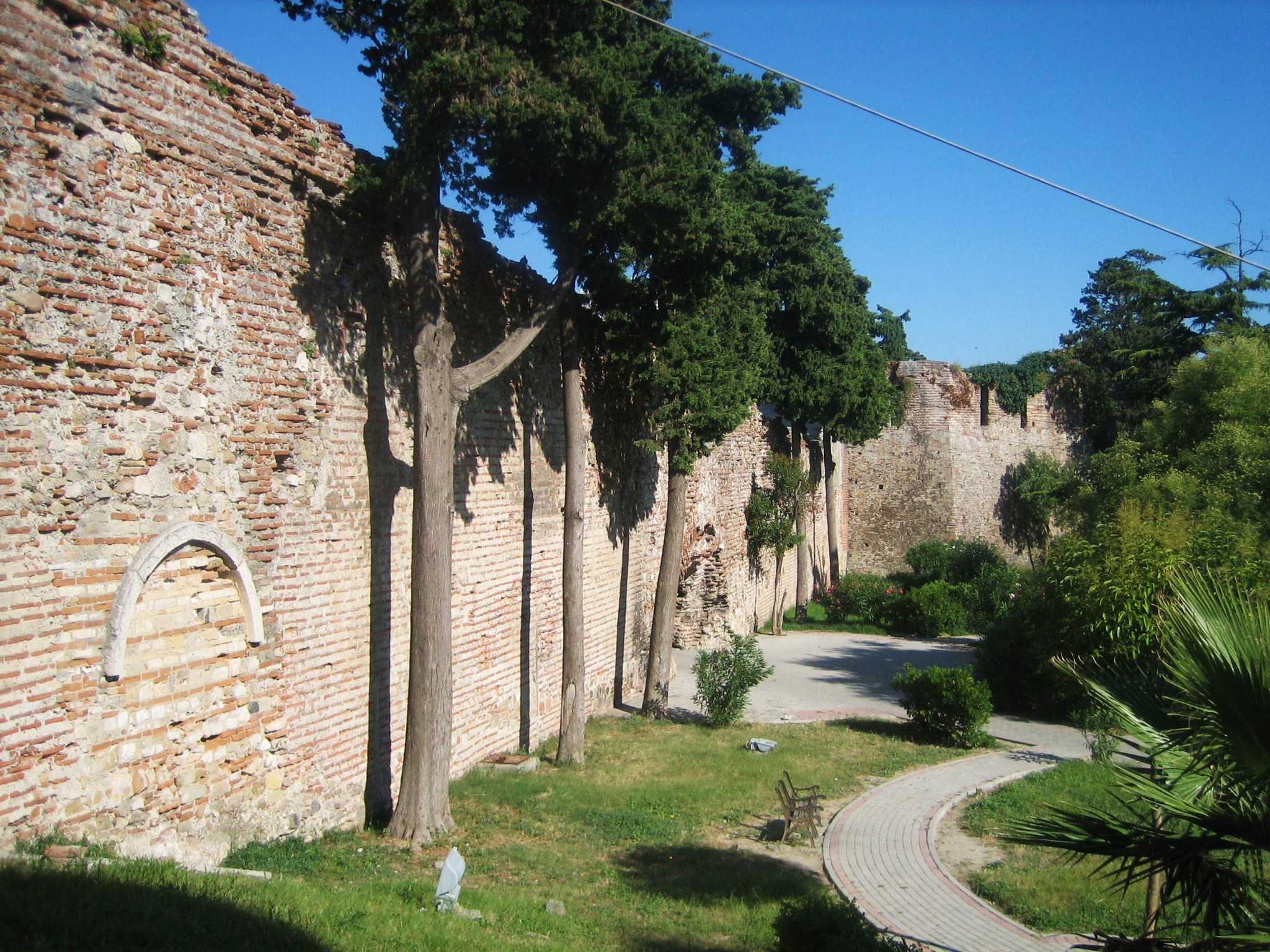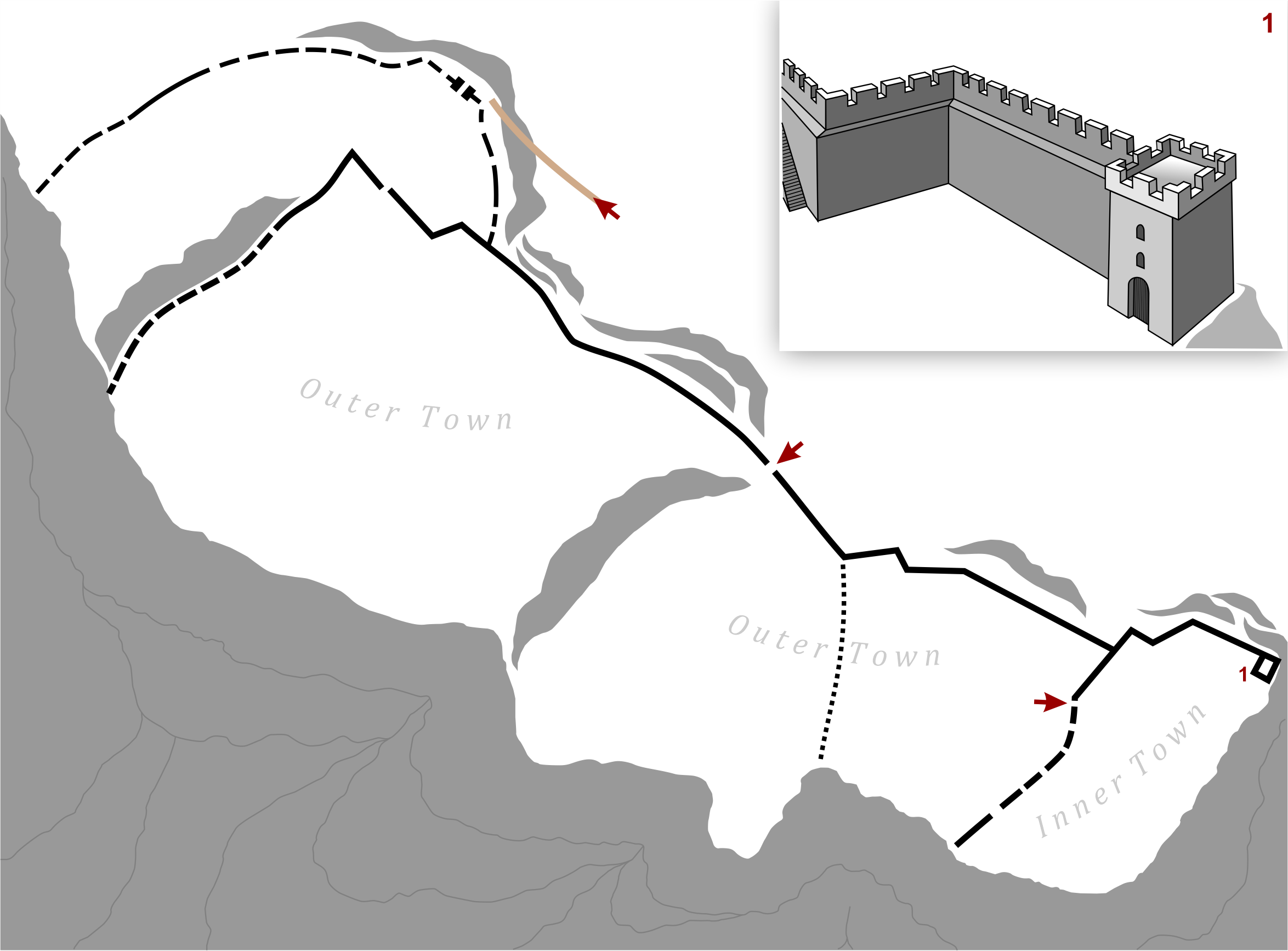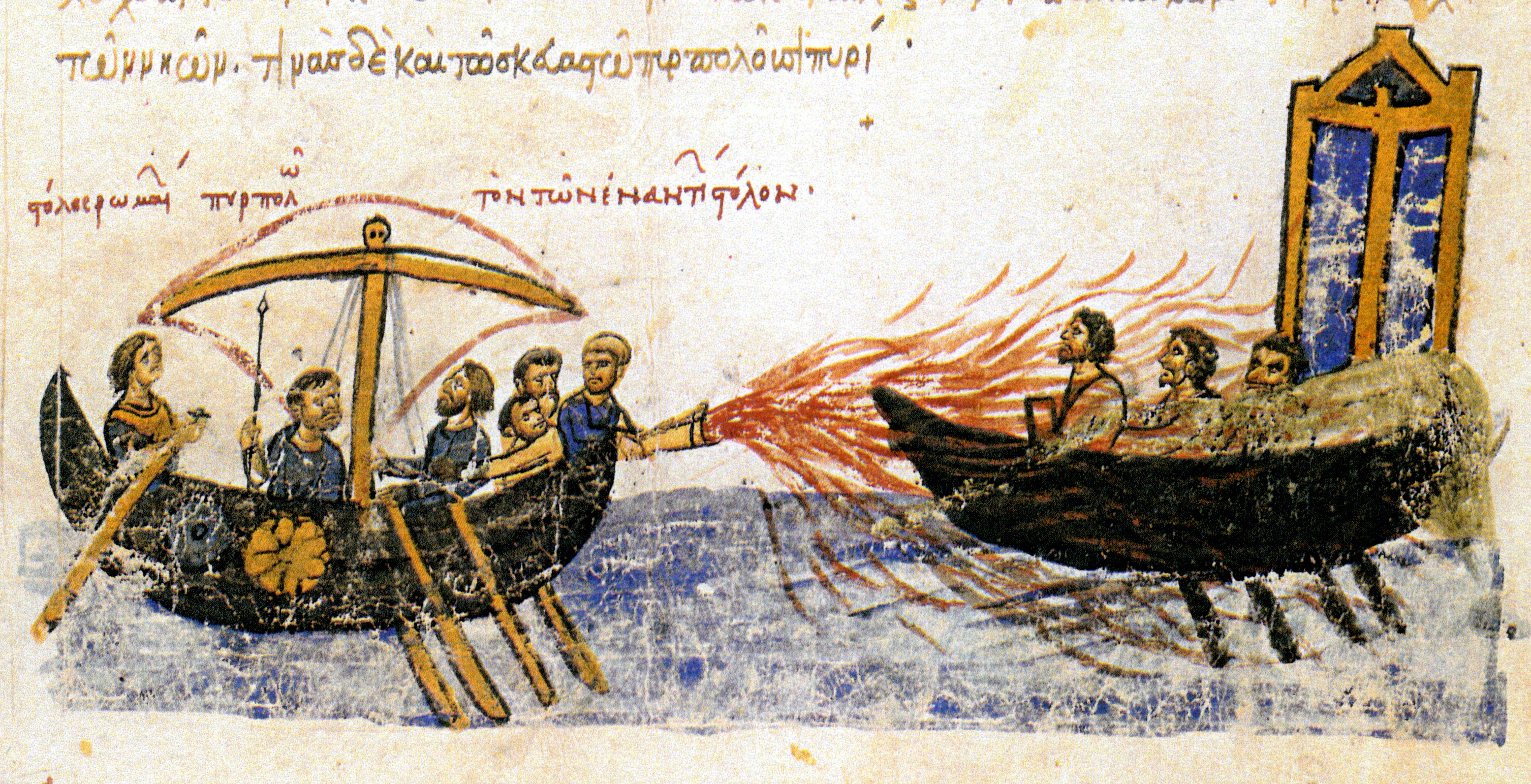|
Alexios Komnenos (governor Of Dyrrhachium)
Alexios Komnenos ( el, Ἀλέξιος Κομνηνός, Alexios Komnēnos; – after 1108) was a Byzantine aristocrat and nephew of Emperor Alexios I Komnenos. Promoted to the rank of ''sebastos'', he served as '' doux'' of Dyrrhachium from 1106 until after 1108. During this time, he led the successful resistance to a siege of Dyrrhachium by Bohemond I of Antioch, leading to the Treaty of Devol. Life Born , Alexios was the second son and third child of the ''sebastokrator'' Isaac Komnenos, older brother of Byzantine emperor Alexios I Komnenos (), and his wife Irene of Alania. As an imperial relative, he bore the title of ''sebastos''. Almost the only details about his life come from the ''Alexiad'', written by his cousin, Anna Komnene. He is first mentioned in the spring of 1106, when he was appointed by his uncle as the military governor ('' doux'') of Dyrrhachium, replacing his older brother John. His earlier life and career are unknown, but it is likely that he had pr ... [...More Info...] [...Related Items...] OR: [Wikipedia] [Google] [Baidu] |
Byzantine Empire
The Byzantine Empire, also referred to as the Eastern Roman Empire or Byzantium, was the continuation of the Roman Empire primarily in its eastern provinces during Late Antiquity and the Middle Ages, when its capital city was Constantinople. It survived the fragmentation and fall of the Western Roman Empire in the 5th century AD and continued to exist for an additional thousand years until the fall of Constantinople to the Ottoman Empire in 1453. During most of its existence, the empire remained the most powerful economic, cultural, and military force in Europe. The terms "Byzantine Empire" and "Eastern Roman Empire" were coined after the end of the realm; its citizens continued to refer to their empire as the Roman Empire, and to themselves as Romans—a term which Greeks continued to use for themselves into Ottoman times. Although the Roman state continued and its traditions were maintained, modern historians prefer to differentiate the Byzantine Empire from Ancient ... [...More Info...] [...Related Items...] OR: [Wikipedia] [Google] [Baidu] |
Battle Of Dyrrhachium (1081)
The Battle of Dyrrhachium took place on October 18, 1081 between the Byzantine Empire, led by the Emperor Alexios I Komnenos (r. 1081–1118), and the Normans of southern Italy under Robert Guiscard, Duke of Apulia and Calabria. The battle was fought outside the city of Dyrrhachium (present-day Durrës in Albania), the major Byzantine stronghold in the western Balkans, and ended in a Norman victory. Following the Norman conquest of Byzantine Italy and Saracen Sicily, the Byzantine emperor, Michael VII Doukas (r. 1071–1078), betrothed his son to Robert Guiscard's daughter. When Michael was deposed, Robert took this as an excuse to invade the Byzantine Empire in 1081. His army laid siege to Dyrrhachium, but his fleet was defeated by the Venetians. On October 18, the Normans engaged a Byzantine army under Alexios I Komnenos outside Dyrrhachium. The battle began with the Byzantine right wing routing the Norman left wing, which broke and fled. Varangian mercenaries joined in t ... [...More Info...] [...Related Items...] OR: [Wikipedia] [Google] [Baidu] |
12th-century Byzantine People
1 (one, unit, unity) is a number representing a single or the only entity. 1 is also a numerical digit and represents a single unit of counting or measurement. For example, a line segment of ''unit length'' is a line segment of length 1. In conventions of sign where zero is considered neither positive nor negative, 1 is the first and smallest positive integer. It is also sometimes considered the first of the infinite sequence of natural numbers, followed by 2, although by other definitions 1 is the second natural number, following 0. The fundamental mathematical property of 1 is to be a multiplicative identity, meaning that any number multiplied by 1 equals the same number. Most if not all properties of 1 can be deduced from this. In advanced mathematics, a multiplicative identity is often denoted 1, even if it is not a number. 1 is by convention not considered a prime number; this was not universally accepted until the mid-20th century. Additionally, 1 is th ... [...More Info...] [...Related Items...] OR: [Wikipedia] [Google] [Baidu] |
11th-century Byzantine People
The 11th century is the period from 1001 ( MI) through 1100 ( MC) in accordance with the Julian calendar, and the 1st century of the 2nd millennium. In the history of Europe, this period is considered the early part of the High Middle Ages. There was, after a brief ascendancy, a sudden decline of Byzantine power and a rise of Norman domination over much of Europe, along with the prominent role in Europe of notably influential popes. Christendom experienced a formal schism in this century which had been developing over previous centuries between the Latin West and Byzantine East, causing a split in its two largest denominations to this day: Roman Catholicism and Eastern Orthodoxy. In Song dynasty China and the classical Islamic world, this century marked the high point for both classical Chinese civilization, science and technology, and classical Islamic science, philosophy, technology and literature. Rival political factions at the Song dynasty court created strife amongst th ... [...More Info...] [...Related Items...] OR: [Wikipedia] [Google] [Baidu] |
12th-century Deaths
1 (one, unit, unity) is a number representing a single or the only entity. 1 is also a numerical digit and represents a single unit of counting or measurement. For example, a line segment of ''unit length'' is a line segment of length 1. In conventions of sign where zero is considered neither positive nor negative, 1 is the first and smallest positive integer. It is also sometimes considered the first of the infinite sequence of natural numbers, followed by 2, although by other definitions 1 is the second natural number, following 0. The fundamental mathematical property of 1 is to be a multiplicative identity, meaning that any number multiplied by 1 equals the same number. Most if not all properties of 1 can be deduced from this. In advanced mathematics, a multiplicative identity is often denoted 1, even if it is not a number. 1 is by convention not considered a prime number; this was not universally accepted until the mid-20th century. Additionally, 1 is the ... [...More Info...] [...Related Items...] OR: [Wikipedia] [Google] [Baidu] |
1070s Births
1 (one, unit, unity) is a number representing a single or the only entity. 1 is also a numerical digit and represents a single unit of counting or measurement. For example, a line segment of ''unit length'' is a line segment of length 1. In conventions of sign where zero is considered neither positive nor negative, 1 is the first and smallest positive integer. It is also sometimes considered the first of the infinite sequence of natural numbers, followed by 2, although by other definitions 1 is the second natural number, following 0. The fundamental mathematical property of 1 is to be a multiplicative identity, meaning that any number multiplied by 1 equals the same number. Most if not all properties of 1 can be deduced from this. In advanced mathematics, a multiplicative identity is often denoted 1, even if it is not a number. 1 is by convention not considered a prime number; this was not universally accepted until the mid-20th century. Additionally, 1 is the s ... [...More Info...] [...Related Items...] OR: [Wikipedia] [Google] [Baidu] |
Leo Styppes
Leo Styppes ( el, ), (died January 12, 1143) was Patriarch of Constantinople from 1134 until his death in 1143. He was a presbyter at Hagia Sophia before his ascension. He reigned uneventfully during the rule of Byzantine emperor John II Comnenus John II Komnenos or Comnenus ( gr, Ἱωάννης ὁ Κομνηνός, Iōannēs ho Komnēnos; 13 September 1087 – 8 April 1143) was Byzantine emperor from 1118 to 1143. Also known as "John the Beautiful" or "John the Good" (), he .... References 12th-century patriarchs of Constantinople 1143 deaths Year of birth unknown {{EasternOrthodox-bishop-stub ... [...More Info...] [...Related Items...] OR: [Wikipedia] [Google] [Baidu] |
Poppet
In folk magic and witchcraft, a poppet (also known as poppit, moppet, mommet or pippy) is a doll made to represent a person, for casting spells on that person or to aid that person through magic. They are occasionally found lodged in chimneys. These dolls may be fashioned from such materials as a carved root, grain or corn shafts, a fruit, paper, wax, a potato, clay, branches, or cloth stuffed with herbs with the intent that any actions performed upon the effigy will be transferred to the subject based on sympathetic magic. Poppets are also used as kitchen witch figures. Etymology The word ''poppet'' is an older spelling of ''puppet'', from Middle English ''popet'', meaning a small child or a doll. In British English it continues to hold this meaning. ''Poppet'' is also a chiefly British term of endearment or diminutive referring to a young child or girl, [...More Info...] [...Related Items...] OR: [Wikipedia] [Google] [Baidu] |
Theodore Balsamon
Theodore Balsamon ( el, Θεόδωρος Βαλσαμῶν) was a canonist of the Eastern Orthodox Church and 12th-century Eastern Orthodox Patriarch of Antioch. Biography Born in the second half of the 12th century at Constantinople; died there, after 1195 (Petit). He was ordained a deacon, appointed '' nomophylax'', and from 1178 to 1183, under Patriarch Theodosius I, he had charge of all ecclesiastical trials or cases submitted to the Patriarchate. In 1193 he became the Patriarch of Antioch, though he remained resident in Constantinople. Balsamon's best work is his "Scholia" (Greek: Σχόλια) (c. 1170), a commentary on the Nomocanon of Photios, the standard work on Eastern Orthodox ecclesiastical and imperial laws and decrees, commissioned by the Emperor Manuel I and the Patriarch Michael III.J.M. Hussey, ''the Orthodox Church in the Byzantine Empire'' (Oxford, 1986), p. 307. In his "Scholia", Balsamon insists on existing laws, and dwells on the relation between canon ... [...More Info...] [...Related Items...] OR: [Wikipedia] [Google] [Baidu] |
Devol (Albania)
Devol ( bg, Девол) also Deabolis or Diabolis, ( el, Δεάβολις) was a medieval fortress and bishopric in western Macedonia, located south of Lake Ohrid in what is today the south-eastern corner of Albania ( Devoll District). Its precise location is unknown today, but it is thought to have been located by the river of the same name (today Devoll River), and on the Roman Via Egnatia road. It is first mentioned in historical sources in John Skylitzes' account of the Byzantine-Bulgarian Wars under Emperor Basil II, whose general Eustathios Daphnomeles is said to have subdued some of the last Bulgarian resisting forces concentrated in Deabolis in 1018. The place is also mentioned in a 1019 charter granted by Basil to the Bulgarian church, as a ''kastron'' (castle) under the jurisdiction of the bishop of Kastoria. It is not precisely known when Deabolis became a bishopric. Saint Clement of Ohrid (ca. 840–916), an eminent early Macedonian writer, is supposed to have been ... [...More Info...] [...Related Items...] OR: [Wikipedia] [Google] [Baidu] |
Greek Fire
Greek fire was an incendiary weapon used by the Eastern Roman Empire beginning . Used to set fire to enemy ships, it consisted of a combustible compound emitted by a flame-throwing weapon. Some historians believe it could be ignited on contact with water, and was probably based on naphtha and quicklime. The Byzantines typically used it in naval battles to great effect, as it could continue burning while floating on water. The technological advantage it provided was responsible for many key Byzantine military victories, most notably the salvation of Constantinople from the first and second Arab sieges, thus securing the empire's survival. The impression made by Greek fire on the western European Crusaders was such that the name was applied to any sort of incendiary weapon, including those used by Arabs, the Chinese, and the Mongols. However, these mixtures used formulas different from that of Byzantine Greek fire, which was a closely guarded state secret. Byzantines also ... [...More Info...] [...Related Items...] OR: [Wikipedia] [Google] [Baidu] |
Siege Engines
A siege engine is a device that is designed to break or circumvent heavy castle doors, thick city walls and other fortifications in siege warfare. Some are immobile, constructed in place to attack enemy fortifications from a distance, while others have wheels to enable advancing up to the enemy fortification. There are many distinct types, such as siege towers that allow foot soldiers to scale walls and attack the defenders, battering rams that damage walls or gates, and large ranged weapons (such as ballistae, catapults/trebuchets and other similar constructions) that attack from a distance by launching projectiles. Some complex siege engines were combinations of these types. Siege engines are fairly large constructions – from the size of a small house to a large building. From antiquity up to the development of gunpowder, they were made largely of wood, using rope or leather to help bind them, possibly with a few pieces of metal at key stress points. They could launch simple ... [...More Info...] [...Related Items...] OR: [Wikipedia] [Google] [Baidu] |






